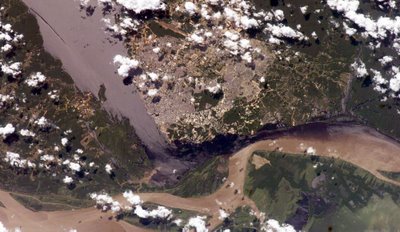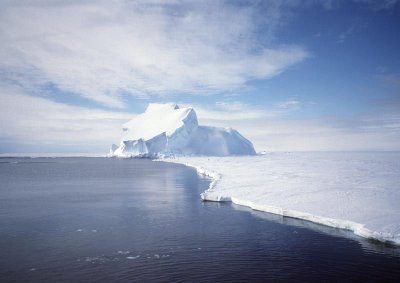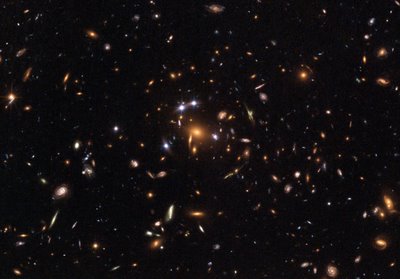Here are a few that I came across that I like:
Solimões and Negro Rivers
(click image for larger view)
The largest river on the planet, the Amazon, forms from the confluence of the Solimões (the upper Amazon River) and the Negro at the Brazilian city of Manaus in central Amazonas. At the river conjunction, the muddy, tan-colored waters of the Solimões meet the "black" water of the Negro River. The unique mixing zone where the waters meet extends downstream through the rainforest for hundreds of miles, and attracts tourists from all over the world, which has contributed to substantial growth in the city of Manaus.
I've been there...
Earth's Antarctic Ice Sheet
(click image for larger view)
For millions of years, Antarctica, the frozen continent at the southern end of the planet, has been encased in a gigantic sheet of ice. Recently, the Gravity Recovery and Climate Experiment (GRACE) satellite has been taking sensitive measurements of the gravity for the entire Earth, including Antarctica. Recent analysis of GRACE data indicate that the Antarctic ice sheet might have lost enough mass to cause the worlds' oceans to rise about .05 inches, on the average, from between 2002 and 2005.
And I've been there...
Hubble Captures A "Five-Star" Rated Gravitational Lens
(click image for larger view)
NASA's Hubble Space Telescope captured the first-ever picture of a group of five star-like images of a single distant quasar.
The multiple-image effect is produced by a process called gravitational lensing, in which the gravitational field of a massive object -- in this case, a cluster of galaxies -- bends and amplifies light from an object -- in this case, a quasar – farther behind it.
Although many examples of gravitational lensing have been observed, this "quintuple quasar" is the only case so far in which multiple quasar images are produced by an entire galaxy cluster acting as a gravitational lens.
But I haven't been there!



No comments:
Post a Comment